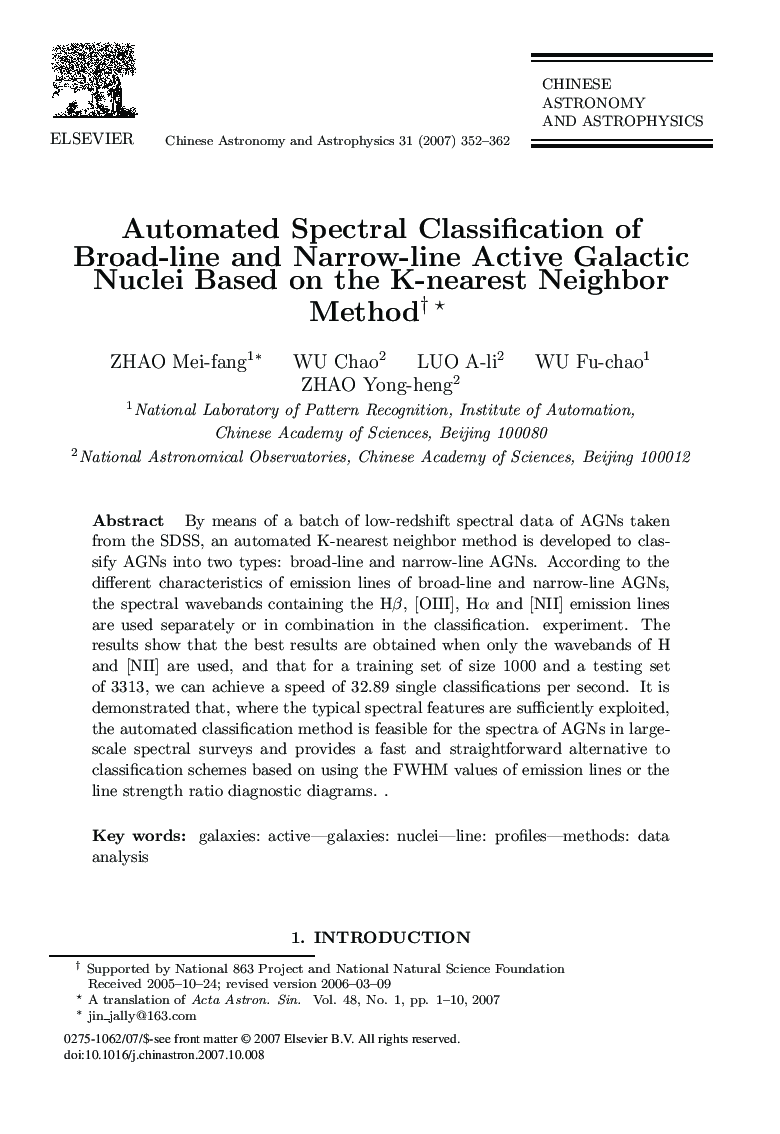| Article ID | Journal | Published Year | Pages | File Type |
|---|---|---|---|---|
| 1772227 | Chinese Astronomy and Astrophysics | 2007 | 11 Pages |
By means of a batch of low-redshift spectral data of AGNs taken from the SDSS, an automated K-nearest neighbor method is developed to classify AGNs into two types: broad-line and narrow-line AGNs. According to the different characteristics of emission lines of broad-line and narrow-line AGNs, the spectral wavebands containing the Hβ, [OIII], Hα and [NII] emission lines are used separately or in combination in the classification. experiment. The results show that the best results are obtained when only the wavebands of H and [NII] are used, and that for a training set of size 1000 and a testing set of 3313, we can achieve a speed of 32.89 single classifications per second. It is demonstrated that, where the typical spectral features are sufficiently exploited, the automated classification method is feasible for the spectra of AGNs in largescale spectral surveys and provides a fast and straightforward alternative to classification schemes based on using the FWHM values of emission lines or the line strength ratio diagnostic diagrams.
